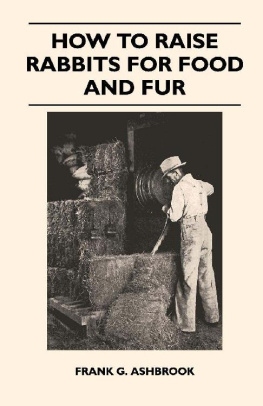CHAPTER I
ON THE EDGE
NEWCASTLE, NATAL, Thursday, October 5, 1899.
Late last Sunday night I found myself slowly crawling towards the front from Pretoria in a commandeered train crammed full of armed Boers and their horses. I had rushed from the Cape to quiet little Bloemfontein, the centre of one of the best administered States in the world, where the heads of the nation in the intervals of discussing war proudly showed me their pianos, their little gardens, little libraries of English books, little museums of African beasts and Greek coins, and all their other evidences of advancing culture. Then on to Pretoria, the same kind of a town on a larger and richer scaletrim bungalow houses, for the most part, spread out among gardens full of roses, honeysuckle, and syringa. But at the station all day and night the scene was not idyllic. Every hour train after train moved awaystores and firewood in front, horses next, and luggage vans for the men behind. The partings from lovers and wives and children must be imagined. They are bad enough to witness when our own soldiers go to the front. But these men are not soldiers at all. Each of them came direct from his home in the town or on some isolated farm. They rode up, dressed just in their ordinary clothes, but for the slung Mauser and the full cartridge belt over the shoulder or round the waist. Except for a few gunners, there is no uniform in the Boer Army. Even the officers can hardly be distinguished from ordinary farmers. The only thing that could be called uniform is the broad-brimmed soft hat of grey or brown. But all Boers wear it. It is generally very stained and dirty, and invariably a rusty crape band is wound about the crown. For the Boer, like the English poorer classes, has large quantities of relations, and one of them is always dying.
By the courtesy of the Pretorian Government I had secured room in the guard's van for myself and a companion, who was equally anxious to cross the Natal frontier before the firing began, and that was expected at any moment. In the van with us were a score of farmers from Middleburg way, their contingent occupying four trains with about 800 men and horses. For the most part they were fine tall men with shaggy light beards, reminding one of Yorkshire farmers, but rougher and not so well dressed. Most of them could speak some English, and many had Scotch or English relatives. They lay on the floor or sat on the edge of the van, talking quietly and smoking enormous pipes. All deeply regretted the war, regretted the farm left behind just when spring and rain are coming, and they were full of foreboding for the women and children left at the mercy of Kaffirs. There was no excitement or shouting or bravado of any kind. So we travelled into the night, the monotony only broken by one violent collision which shook us all flat on the floor, while arms and stores fell crashing upon us. In the silent pause which followed, whilst we wondered if we were dead, I could hear the Kaffirs chattering in their mud huts close by, and in the distance a cornet was playing "Home, Sweet Home," with variations.
It must have been the next evening, as we were waiting three or four hours, as usual, for the line to clear, that General Joubert came up in a special train. A few young men and boys in ordinary clothes formed his "staff." The General himself wore the usual brown slouch hat with crape band, and a blue frock coat, not luxuriously new. His beard was quite white, but his long straight hair was still more black than grey. The brown sallow face was deeply wrinkled and marked, but the dark brown eyes were still bright, and looked out upon the world with a kind of simplicity mingled with shrewdness, or perhaps some subtler quality. He spoke English with a piquant lack of grammar and misuse of words. When I travelled with him next day, almost the first thing he said to me was, "The heart of my soul is bloody with sorrow." His moderating influence on the Kruger Government is well known, and he described to me how he had done his utmost for peace. But he also described how bit by bit England had pushed the Boers out of their inheritance, and taken advantage of them in every conference and native war. He was particularly hurt that the Queen had taken no notice of the long letter or pamphlet he wrote to her on the situation. And, by the way, I often observed what regard most Boers appear to feel for the Queen personally. They constantly couple her name with Gladstone's when they wish to say anything nice about English politics. As to the General's views on the crisis, there would be little new to say. Till the present war his hope had been for a South African Confederacy under English protectionthe Cape, Natal, Free State, and Transvaal all having equal rights and local self-government. He knows well enough the inner causes of the present evils. "But now," he said, "we can only leave it to God. If it is His will that the Transvaal perish, we can only do our best."
At Zandspruit, the scene of the old Sand River Convention, the whole Boer camp crowded to the station to greet the national hero, and he was at once surrounded by a herd of farmers, shaking his hands and patting him warmly on the back. It was a respectful but democratic greeting. The Boer Armyif for a moment we may give that name to an unorganised collection of volunteersis entirely democratic. The men are nominally under field cornets, commanders, and the General. But they openly boast that on the field the authority and direction of officers do not count for much, and they go pretty much as they please. The camp, though not in the least disorderly, was confused and irregularstores, firewood, horses, cattle, and tents strewn about the enormous veldt, almost haphazard, though the districts were kept fairly well separate. Provisions were plenty, but the cooking was bad. It took three days to get bread made, and some detachments had to eat their meat raw. I think there were not more than 10,000 or less than 7,000 men in the camp at that time, but the commandeered trains crawled up every two or three hours with their new loads.





